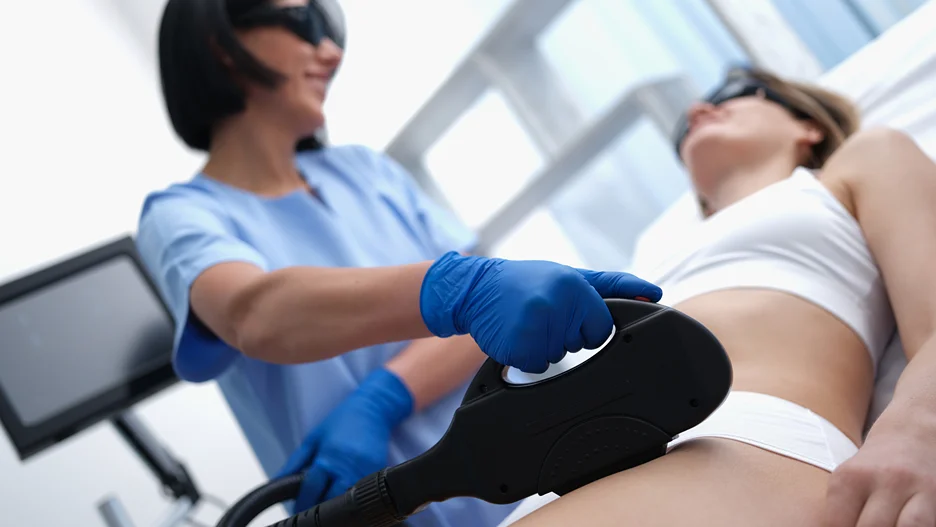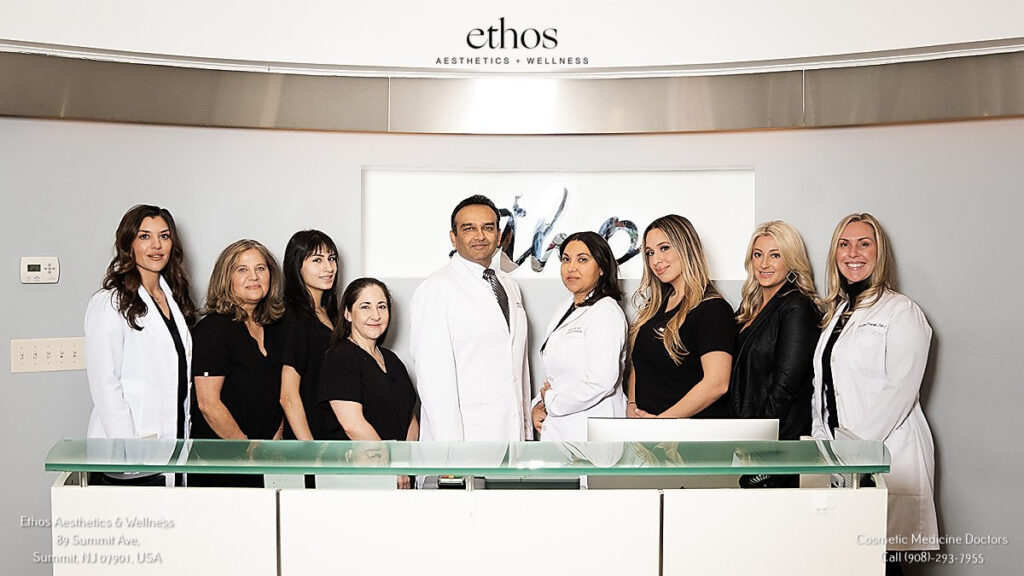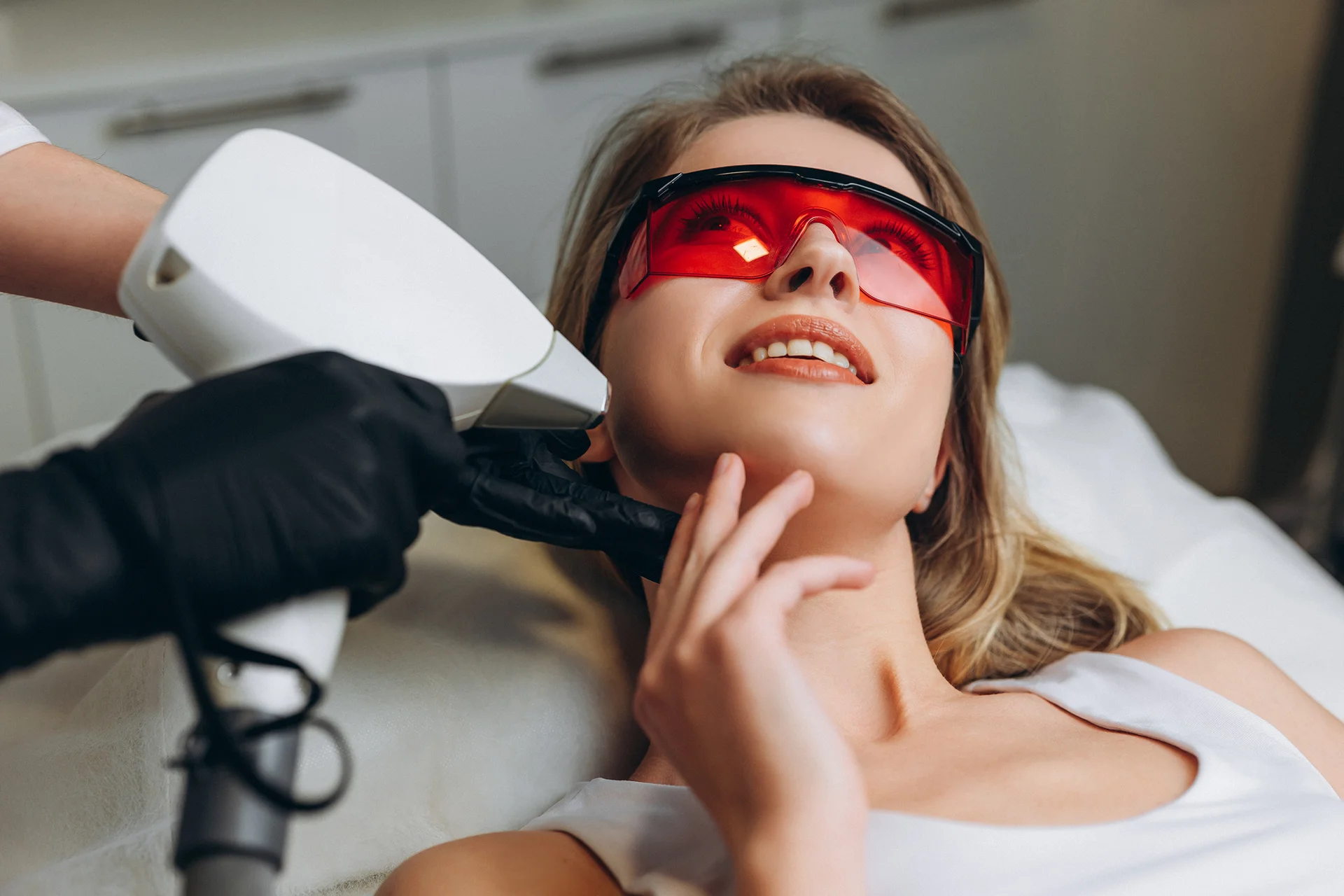Laser hair removal has become an increasingly popular option for people looking to permanently reduce unwanted body and facial hair. This advanced hair removal technique uses targeted laser energy to damage the hair follicle so it no longer produces hair.
But what happens after the initial laser hair removal treatment? Does the hair just instantly vanish? Or is the process more gradual?
In this comprehensive guide, we’ll explain exactly what to expect when it comes to shedding and regrowth after laser hair removal sessions. We’ll cover:
- How laser hair removal works
- What happens immediately after treatment
- The shedding timeline: when hairs fall out
- What the shedding phase looks like
- When does hair regrowth happens after shedding
- Factors that influence laser hair removal results
- Tips for continued success
Understanding the process will help you know what’s “normal” versus a cause for concern. You’ll be prepared for the laser hair removal journey at Ethos Aesthetics + Wellness.
Let’s get started!
How Does Laser Hair Removal Work?

First, it’s helpful to understand what this popular hair removal treatment actually does.
Laser hair removal uses concentrated beams of laser light to penetrate the skin and target the melanin (pigment) in hair follicles. Melanin absorbs the laser energy, which damages and destroys the hair follicles so they can no longer produce hair.
This advanced technique precisely targets dark hairs while avoiding damage to the surrounding skin. The laser’s heat essentially “shuts off” the follicle’s ability to regenerate and grow new hairs.
Laser hair removal offers a more permanent hair reduction solution compared to temporary options like shaving, waxing, or plucking. Those methods only remove already-grown hairs above the skin’s surface. The hair follicle remains intact below the skin, ready to produce more hairs at the next growth cycle.
With laser technology, the follicle itself is altered to prevent future hair. But it doesn’t happen instantly after just one session. Here’s why:
The Hair Growth Cycle
Human hair grows in three phases:
- Anagen phase: active hair growth
- Catagen phase: transitional phase
- Telogen phase: resting phase
At any given time, only a portion of your hair follicles are in the active anagen phase. Others are dormant in the telogen phase before new growth starts.
Laser hair removal targets hair follicles when they are most active during the anagen phase. But not all follicles sync up in the same cycle.
That’s why multiple laser sessions are needed—typically 4-6 weeks apart. This timing allows new hair follicles to enter the active anagen phase so they can be targeted at the next appointment.
Over a course of treatments, laser can effectively disable all hair follicles from regenerating and producing new growth.
What Happens Immediately After Laser Hair Removal?
Now that you understand how the technology works, what should you expect right after a laser session?
Here’s a general timeline of common side effects and recovery:
Immediately after: Treated skin may be red and swollen around hair follicles. Some minor irritation is normal.
Within 24 hours: Swelling subsides, though some redness may remain. Slight irritation can persist. Applying ice packs helps soothe skin.
1-3 days after: Most surface redness fades. Any scabbing or blistering should be minimal. Discomfort typically resolves within a few days.
1 week after: Most side effects completely resolve. No significant pain, though some itching is common. Exfoliating helps remove dead skin cells and hairs.
2-3 weeks after: Shedding phase begins as damaged hairs fall out. No pain/discomfort during shedding.
After the first laser session, most people can return to normal activities right away with minimal downtime. Some lingering redness may be covered up with makeup.
Now let’s look closer at the shedding timeline…
When Does Hair Fall Out After Laser Hair Removal?
Here’s the thing: laser doesn’t make hair instantly vanish into thin air. The treated hairs actually fall out over time.
This shedding phase starts around 2-3 weeks after laser treatments. It can last up to 30 days as hairs gradually shed:
| Weeks 1-2 | No shedding yet. Hairs will appear intact. |
| Weeks 2-3 | Early stage shedding begins. May notice some hairs starting to fall out or look ready to shed. |
| Weeks 3-4 | More pronounced shedding. Many hairs will fall out easily during this peak phase. |
| Weeks 4-6 | Shedding tapers off. Most damaged hairs have worked their way out. |
The timing varies slightly person to person. But within a month after treatment, you can expect to see many of the treated hairs falling away.
What Does Hair Shedding Look Like After Laser Hair Removal?
When those singed hairs start shedding, what exactly should you expect to see? Here are a few common sights:
- Stubble hairs that are loose and ready to shed
- Short, blunted hairs falling out easily with a light pull
- Little black dots on the skin that are the shed hair shafts
- Less hair density in the treated areas
- More smooth, hair-free skin as hairs drop out
You may see what looks like new hair growth within the first week after laser. Rest assured, it’s not new growth—just hairs still working their way out after being damaged on the root level.
As hairs fall out, gently exfoliating with a scrub or dry brushing can help speed up the shedding process. Just don’t aggressively pluck or pull hairs. Let them shed naturally.
Is There Any Pain During the Shedding Phase?
The good news is shedding itself shouldn’t hurt. You may feel itching, tingling or dry skin as hairs drop and the skin adjusts. But no significant pain or discomfort is expected during this phase.
If you do feel ongoing irritation or sensitivity weeks later, check with your technician. It could signal an issue like infection or inflammation that needs attention.
How Long Does Regrowth Take After Shedding?
Once hairs shed from a laser session, how long until you see any regrowth? It depends on the hair cycle and your individual response.
On average, expect to wait 4-8 weeks to allow the follicles to rejuvenate and restart growth. That’s why treatment sessions are scheduled every 4-8 weeks—right before new hairs emerge again.
Here’s a general timeline of regrowth:
| Timeline | Hair Regrowth Description |
| Month 1 | Little hair regrowth since follicles are still disabled. Skin stays smooth. |
| Months 2-3 | Some hair regrowth may become visible as follicles reactivate. |
| Months 4-6 | More substantial regrowth between treatments. Time for next session. |
| Months 7-9 | After a series of sessions, regrowth is diminished. |
| 12+ Months | Long-term hair reduction achieved. Only occasional touch-ups needed. |
How Many Laser Sessions Are Needed for Hair Removal?
Permanent hair removal is a gradual process over several treatments—not a one-and-done solution. On average, it takes 6-9 sessions to fully disable all the hair follicles.
Why so many? Because not all hair follicles are active at once. Laser only impacts the hairs currently in their growth phase. Dormant follicles won’t respond to treatment.
With multiple laser sessions spaced 4-8 weeks apart, all follicles can eventually cycle through and be disabled for long-term hair reduction.
What Factors Influence Laser Hair Removal Results?
For the best outcome, here are some considerations:
Hair color – Coarse, dark hairs respond best. Light, fine hairs are harder to treat.
Skin tone – Pale to light brown skin gets the best results. Darker skin is riskier.
Hair thickness – Thick, dense hair is easier to laser than fine, thin hair.
Hormones – Fluctuating hormones may impact hair growth patterns.
Wavelength – Medical-grade lasers penetrate deeper than lower-powered devices.
Technician skill – An experienced provider optimizes treatment settings specifically for your hair and skin type. Less risk of complications.
Number of sessions – More sessions allow all follicles to cycle through for better coverage.
Aftercare – Avoid sun, exfoliate regularly, use post-treatment products to support healing.
What Are Tips for Continued Success With Laser Hair Removal?
To get the most out of your investment, be sure to:
- Stick to your treatment plan and recommended number of sessions based on your individual needs. Don’t skip appointments.
- Avoid sun exposure and tanning beds for at least 4 weeks pre- and post-treatment.
- Exfoliate regularly to help shed hairs after sessions. But don’t aggressively pluck.
- Use a broad-spectrum SPF 30+ sunscreen daily on treated areas to protect skin.
- Avoid picking/scratching the treated areas to minimize infection risk.
- Shave if needed in between sessions to maintain smooth skin. Just avoid waxing/plucking.
- Keep following up even after initial results to catch any occasional regrowth.
- Consider adding complimentary skin treatments to enhance results.
The Future of Hair Removal is Here

Laser hair removal doesn’t instantly eliminate hair after just one session. Maximum results take a series of treatments over several months to address the entire growth cycle.
But the long-term investment pays off. With continued treatments and proper aftercare, laser can deliver smooth, hair-free skin for years to come.
Ready to get started? The experts at Ethos Aesthetics + Wellness offer complimentary consultations to create a personalized laser hair removal plan designed for your unique hair and skin needs.
Schedule a free intro session today to get all your questions answered as we walk you through the process from start to finish.







